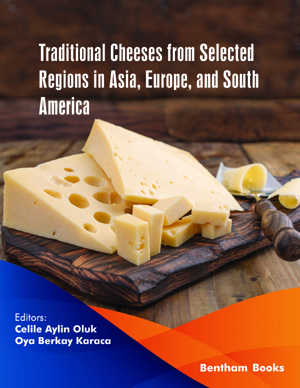Abstract
Traditional cheeses are specific products of the Republic of North Macedonia, mainly produced in small-scale farms or farm houses located in high mountains and rural areas. Some of the best-known cheese types are produced in almost all regions in North Macedonia: kashkaval, white brined cheese and beaten cheese (“bieno sirenje”). These types of cheese can also be found in other Balkan countries, only with different tastes and properties. Kashkaval is a type of hard yellow cheese with a natural rind and it belongs to the Pasta filata cheese group. Traditionally, it is made from sheep milk. White brined cheese is the most commonly consumed type of cheese that can be produced from sheep, cow and goat milk. Beaten cheese is a type of yellow hard cheese and the scalding procedure is a crucial step in its production. The great diversity in the manufacturing procedures results with variations in the physical, chemical and microbiological composition, as well as with variations in the proteolysis, the texture, and volatiles. In this chapter, the properties of cheese, the cheese-making technology and the artisan culture of the traditional cheese varieties in the Republic of North Macedonia are discussed.
Keywords: Beaten cheese (“bieno sirenje”), Kashkaval cheese, Proteolysis, Volatiles, White brined cheese.



















